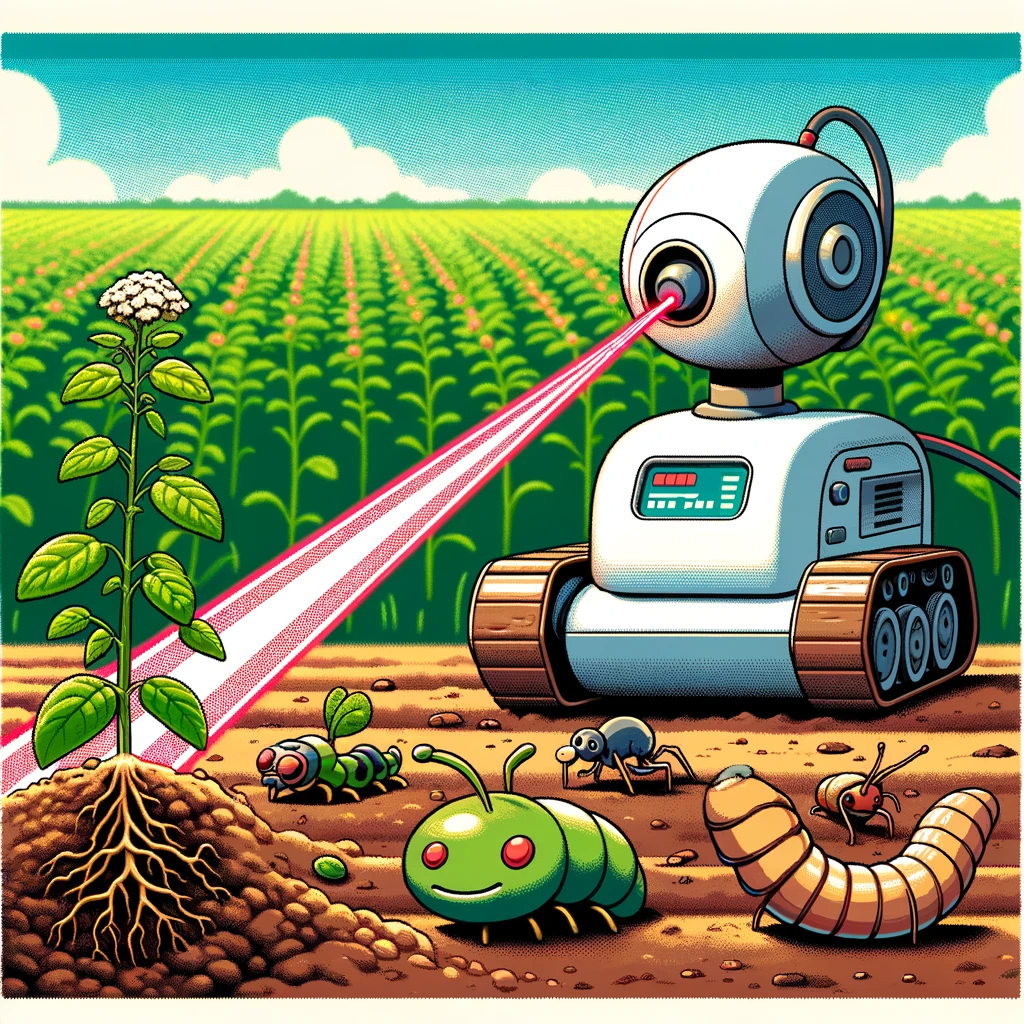
The Future of Farming: Laser Weeding and Its Impact on the Environment
In an era where sustainable agriculture is more important than ever, a revolutionary method of weed control has surfaced, promising a more eco-friendly approach to farming. This method, known as “laser weeding,” has been explored in a fascinating study titled “Side-effects of laser weeding: quantifying off-target risks to earthworms (Enchytraeids) and insects (Tenebrio molitor and Adalia bipunctata).”
What is Laser Weeding?
Laser weeding is an advanced technique that uses laser beams to target and eliminate weeds. It’s an innovative approach that leverages artificial intelligence to accurately identify and direct laser beams at weed seedlings, eliminating them through intense heat. This method drastically reduces the need for harmful chemicals or soil-disrupting mechanical processes traditionally used in weed control.
The Study’s Key Findings
The study conducted detailed experiments to understand the impact of laser weeding on non-target organisms like earthworms and insects. Here’s a simplified breakdown of their findings:

- Earthworms: Surprisingly, the study revealed that laser treatments, even at high intensities, did not significantly harm earthworms in various soil types. This is good news, as earthworms play a vital role in soil health.
- Insects: The situation was different for insects. The study showed that laser doses effective against plants were lethal to insects like the yellow mealworm beetle and the two-spotted lady beetle. Interestingly, larger beetles were more resistant to laser treatment than smaller ones.
- Implications: These findings are crucial as they indicate that while laser weeding is highly effective against weeds, it also poses a risk to certain beneficial insects. This highlights the need for further research and possibly developing more precise targeting mechanisms to minimize harm to these non-target organisms.
The Environmental Upside
The study underlines the environmental benefits of laser weeding. Unlike traditional methods, it doesn’t leave harmful chemicals in the soil or disrupt the soil structure. This makes it a potentially more sustainable and eco-friendly option for weed control.
Safety Considerations
An essential aspect of laser weeding is safety. The study suggests using non-collimated laser beams in commercial applications to reduce risks like accidental reflections, which could harm humans or animals.
The Future of Laser Weeding
While laser weeding is still in its early stages, its potential is enormous. It could revolutionize the way we approach agriculture, making it more sustainable and less harmful to the environment. Future developments might even include the ability to differentiate between harmful and beneficial insects, making it an even more precise and eco-friendly option.
Conclusion
The study “Side-effects of laser weeding: quantifying off-target risks to earthworms (Enchytraeids) and insects (Tenebrio molitor and Adalia bipunctata)” offers a promising glimpse into the future of sustainable farming. While there are still challenges to overcome, particularly in protecting non-target organisms, the potential benefits of laser weeding for the environment are undeniable. As we move towards more sustainable agricultural practices, laser weeding could play a pivotal role in shaping the future of farming.
Embark on a Scientific Adventure:
Join ‘This Week in Science’ and explore the universe of knowledge! Our weekly newsletter is crafted for educators and enthusiasts, bringing you the latest and most exciting scientific discoveries. Every issue is packed with cutting-edge research, breakthroughs, and captivating stories from the world of science. Subscribe now for free and transform your teaching and learning experiences. Embark on your path to becoming more knowledgeable and connected with the ever-evolving world of science.



